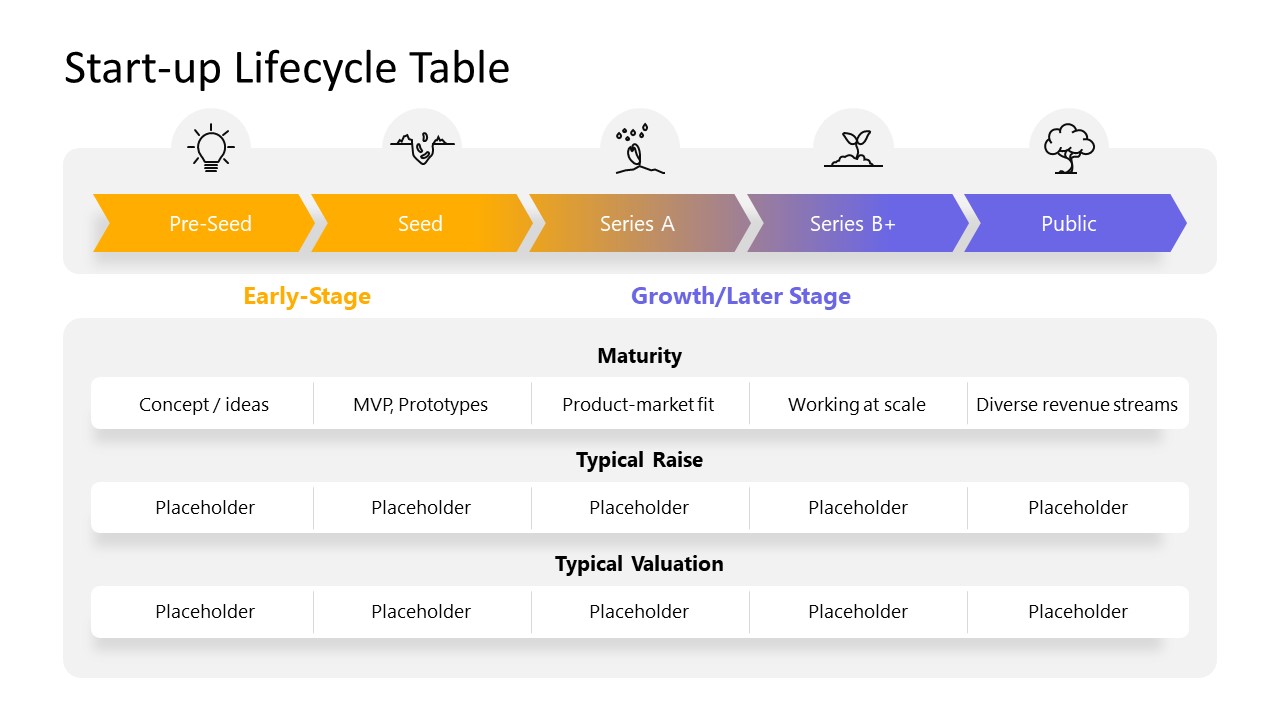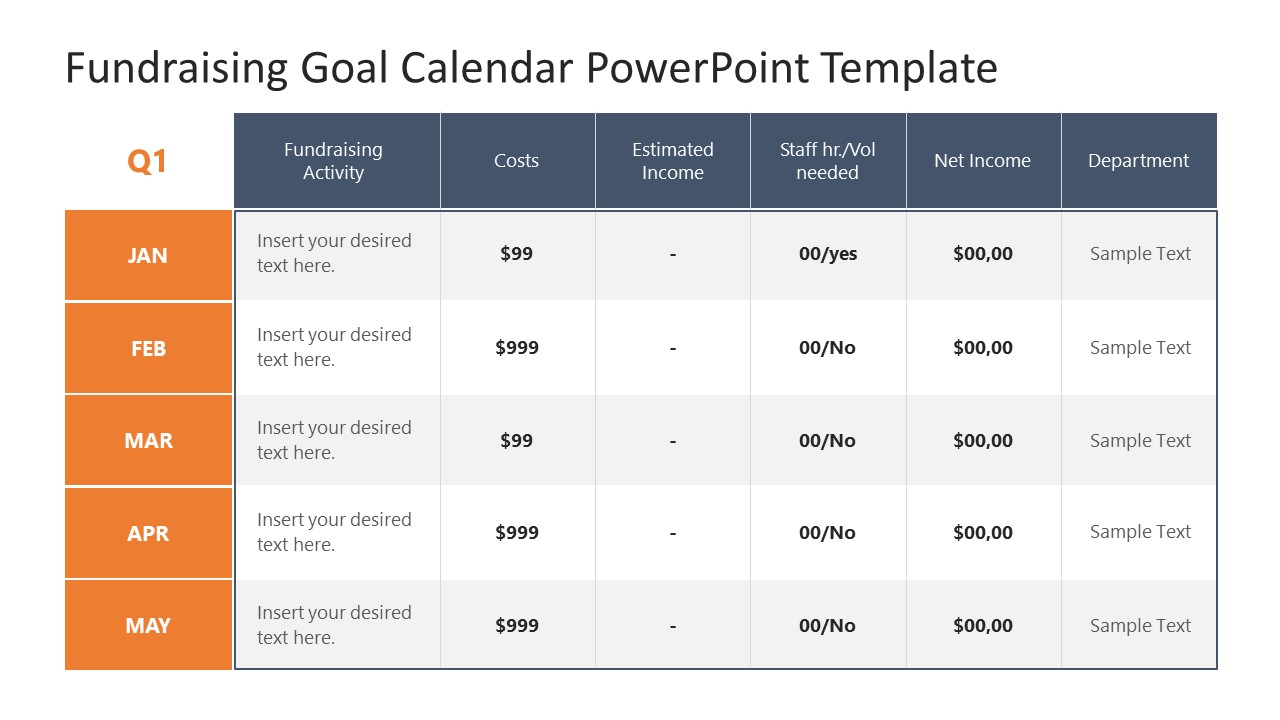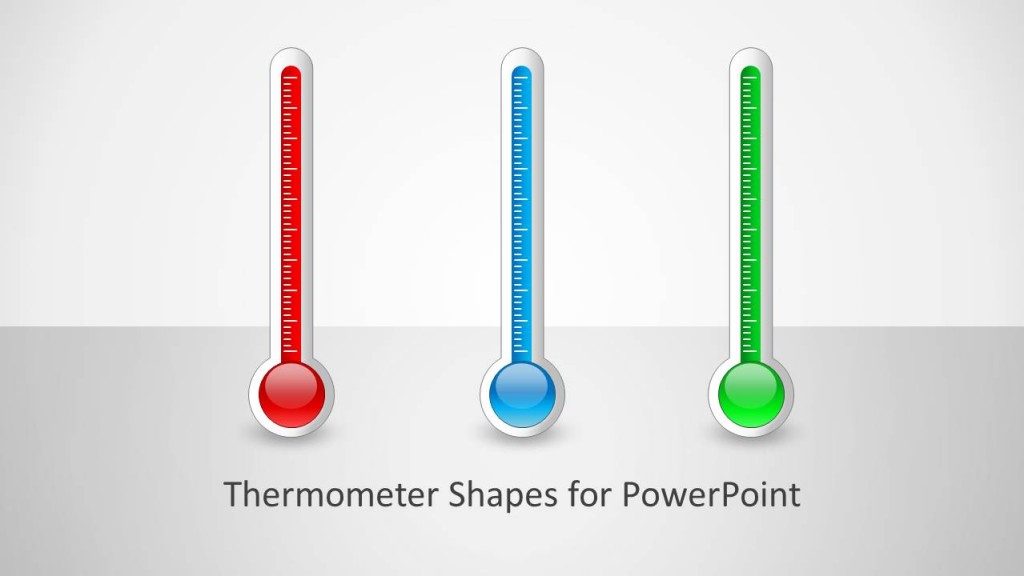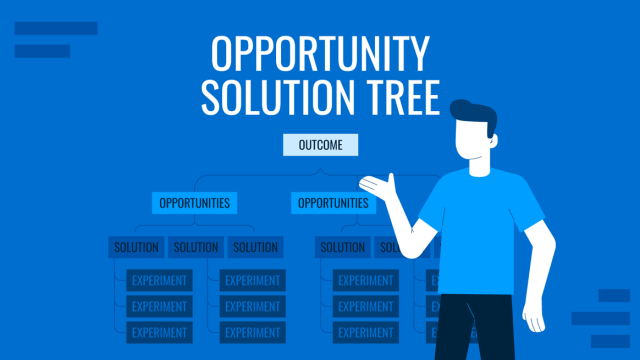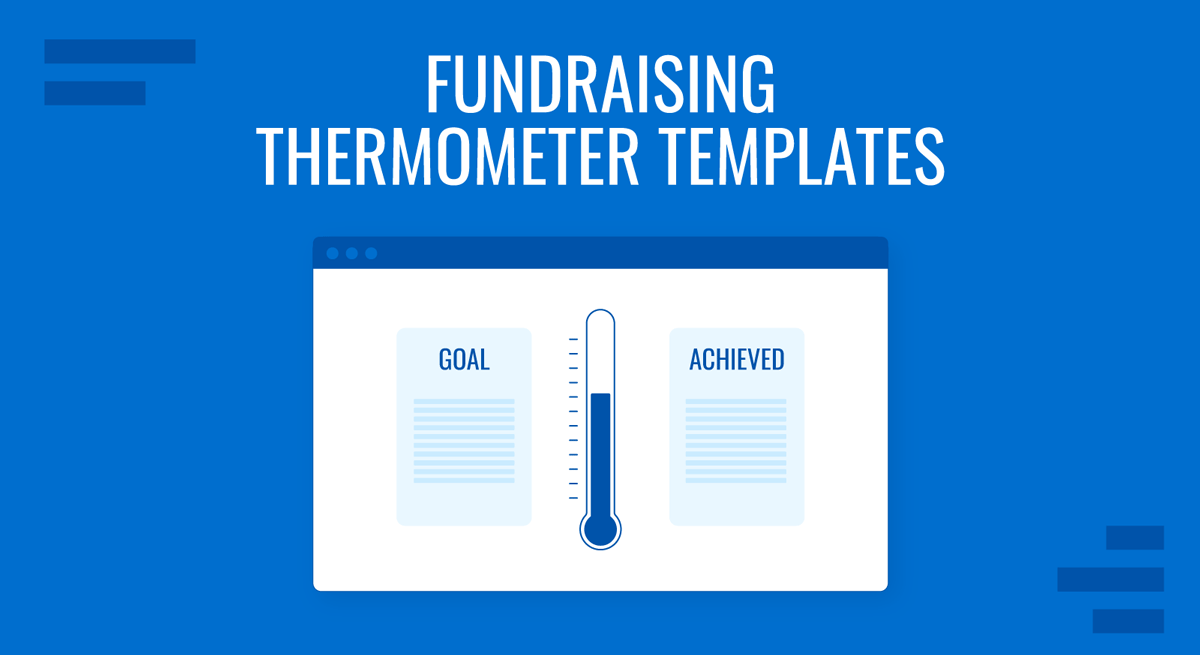
Fundraising is an essential practice for non-profit organizations, startups, and individuals who need to generate financial support for a project, cause, or even release a product into the market. As a process, it requires us to connect with the audience and reach the maximum diffusion available in our community. For that reason, it is important to count with visual aids like fundraising thermometer templates.
This article will explore the benefits of using fundraising pitch deck templates, provide insights on how to customize one, and share some of the best slide templates and infographics for fundraising presentations in PowerPoint or Google Slides.
Table of Contents
- The Power of Fundraising
- What Is a Fundraising Thermometer?
- Why You Need a Fundraising Thermometer?
- Types of Fundraising Thermometers
- What Is a Fundraising Thermometer Template?
- How to Start a Fundraising Presentation for Non-Profits
- How to Start a Fundraising Presentation for Startups
- Infographics and Visualization Ideas as Alternatives to the Fundraising Thermometer
- Final Words
The Power of Fundraising
Whenever we think about fundraising, we instantly associate with foundations. Although foundations are the large-scale take on fundraising practices, we need to consider the smaller side of the spectrum, the daily application of fundraising that any individual, team, or non-profit can take as long as two elements are clear: purpose and goal.
Donors are motivated by the possibility to make an impact on a cause, or to bring a project to life. It is about the driving force of helping the community, and one of the main reasons donors are named in fundraising campaigns – often mentioning other projects they contributed, as a medium to motivate others to join the new fundraising project.
And this is where creativity and fundraisers make a lasting impact. Let’s consider for a minute a trend that happened not so many years ago: the ALS Ice Bucket Challenge. In 2014, the viral challenge saw celebrities worldwide throwing themselves a bucket filled with icy water and nominating another person – acknowledged by the participant for their power or influence – to do the same. Simultaneously, the participant donated to the Amyotrophic Lateral Sclerosis Association. Although the ice bucket was the “punishment” for not contributing to the cause, it swiftly changed its meaning and became viral, exponentially increasing the reach of this important fundraising cause. The numbers reflect the success and social impact of fundraising as a total sum of $115m reached the ALS Association, with a viral reach of 17m videos made. Even when not all videos derived in donations, it helped to spread the message about ALS as an illness that requires research to be cured (and funding for that purpose), so it’s a double impact driven out of a creative idea.
What Is a Fundraising Thermometer?
A fundraising thermometer is a visual aid intended for fundraising initiatives. They aim to showcase how much funds were gathered for the fundraising project and how far they are from the fundraising goal.
The concept of the fundraising thermometer is a metaphor for the mercury thermometer, rising with increasing temperature, and it symbolizes growth or progress toward a goal. Although we cannot pinpoint precise historical references for its origin, it is a visual aid popularized in the early stages of the 20th century, especially in public fundraising initiatives by charities, schools, churches, and other organizations. The visual metaphor of a thermometer filling up is intuitive and universally understood, making it an effective tool for engaging a broad audience and stimulating community involvement.
Why You Need a Fundraising Thermometer (5 Reasons)
Visual Motivation
Using a fundraising graphic thermometer provides a clear and easy-to-understand representation of how much money has been raised and how much is left to meet the target goal. A research concluded that given three tiers for donation, being A (0-33%), B (33-66%), and C (66-100%), the contributions made for tier B were significantly larger than those to tier A, and those made for tier C were even larger than the ones made for tier B. This speaks of the psychological impact of achieving a goal, and visual aids help to grasp how far we currently stand from the target.
Increases Social Proof
As we mentioned above, another key aspect of donor psychology is social proof. When potential donors see that others have contributed to a campaign, it creates a sense of community and social proof, encouraging them to contribute. This is often seen in fundraising initiatives that involve physical activity, like charity races, and the term coined for this is called “martyrdom effect.”
Using a thermometer for fundraising, organizers can label how the thermometer is rising and from where the money is coming – i.e., in case of donations coming from foundations or philanthropists. This also drives other members of the same local community or familiarized with the context to contribute.
Promotes Transparency
Using a fundraising thermometer promotes transparency by openly showing how donations add up, which can build trust and credibility among potential donors. This is particularly important in low-scale fundraising activities, where people might not be aware of your background as a fundraiser. Using a thermometer for fundraising template, the organizers can deliver a fundraising presentation and align prospective donors on the importance of the cause and how their contribution can help others.
Facilitates Goal Setting
As in any project, having visual, referenceable data makes a difference in terms of strategy planning and goal setting. Consequently, organizers can evaluate their performance regarding how close they were to the original goal, why they did or did not meet the intended goal, which aspects to improve, etc.
Inspires Team Members
For organizations and groups, seeing the thermometer rise can motivate team members and volunteers, encouraging them to intensify their fundraising efforts. Fundraisers often adopt the role of a cheerleader for the cause, needing to mentor others on the importance of the activity, invite people to collaborate, organize the event, and so on. It is a taxing effort for all team members, so seeing how the goal thermometer approaches the target is a powerful asset to keep the flame alive.
Types of Fundraising Thermometers
Physical Fundraising Thermometer
This is the old-school way of charitable events. Fundraisers use to create a cardboard template of a thermometer and add labels or other visual elements that can indicate how the thermometer temperature is rising – meaning that more money is coming and they are closer to the goal.
For this type of thermometers, we can see horizontal thermometers (like a horizontal bar chart that grows), gauge charts whose needle moves closer to the right as the money comes in, or the typical vertical red thermometers. We can now simplify the creation process of physical fundraising thermometers by using PowerPoint temperature gauge templates or other similar thermometer slide template for PowerPoint. Just print the created template to the size you require and make the graphical elements represent how the thermometer rises.
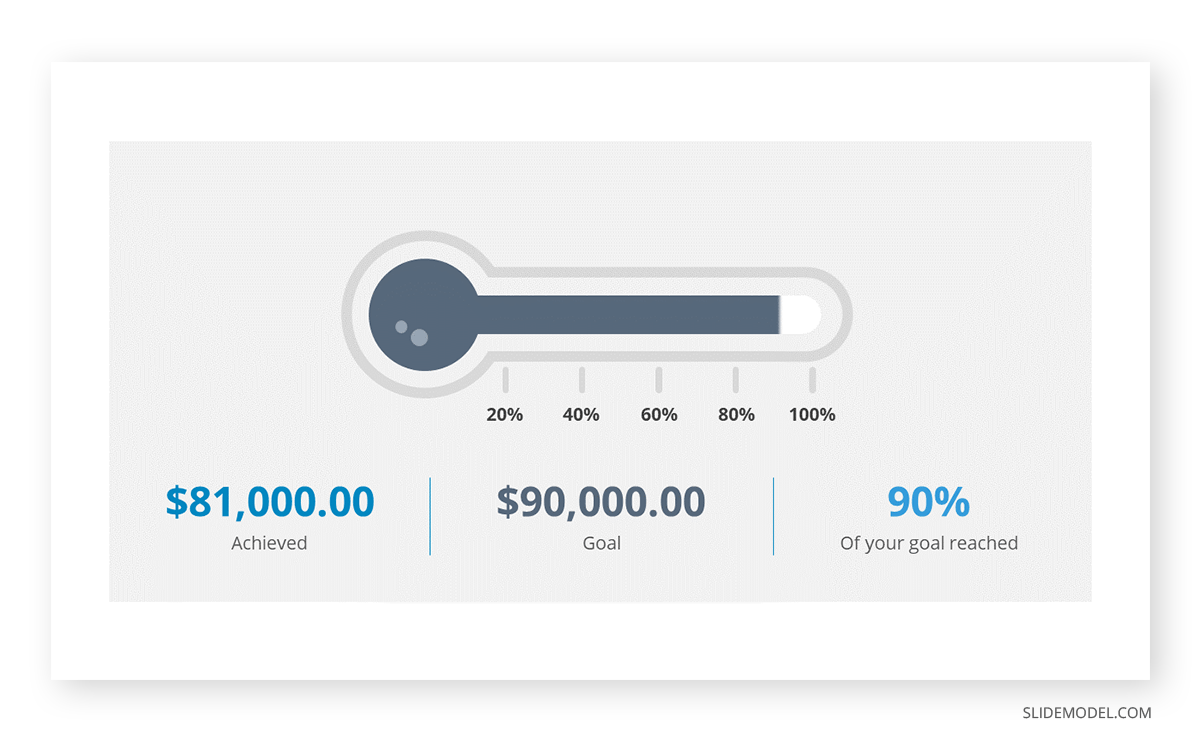
Digital Fundraising Thermometers
The digital format is the opted choice by organizations as it can update data in real-time. This solution can be implemented in a web app format that showcases where the donations are coming from, the sum for each, and the live progress of the thermometer.
At the same time, digital fundraising thermometers are often shared on social media platforms. Organizations can simplify the creation process of the digital format by using one fundraising thermometer PPT template as part of the layout, then code a method to fill that bar as money comes in.
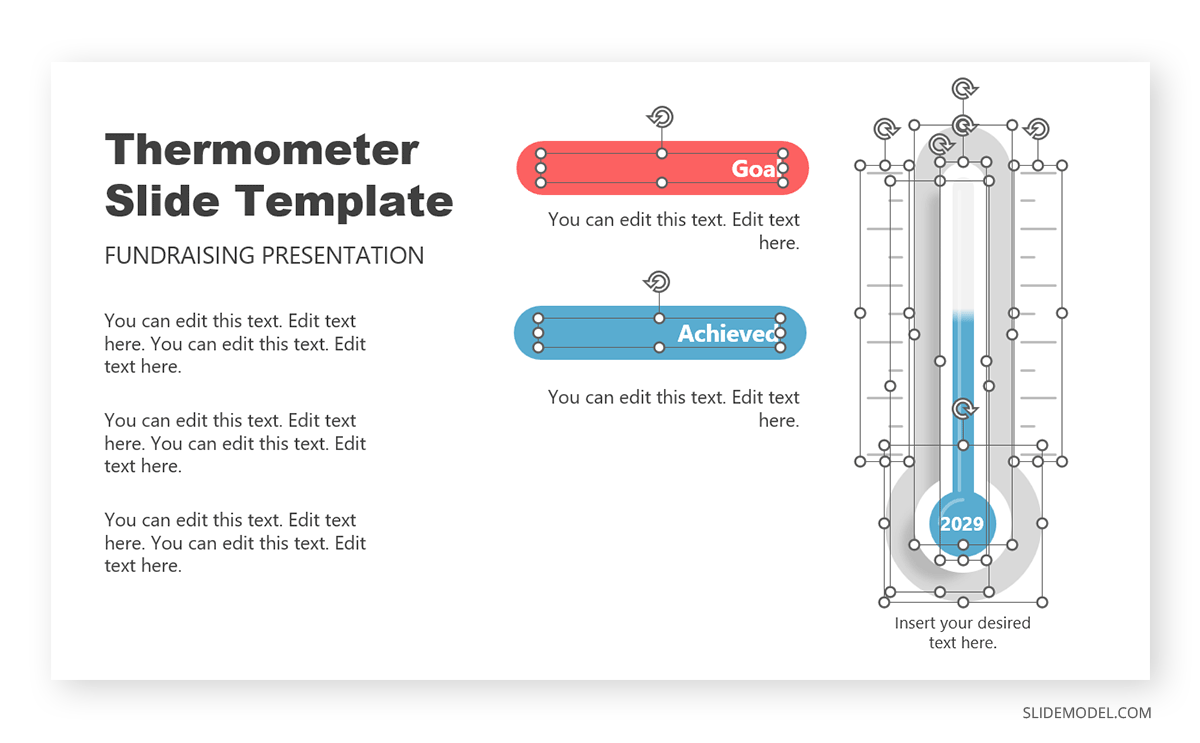
What Is a Fundraising Thermometer Template?
A fundraising thermometer template is an editable PowerPoint file that helps fundraising organizers visually represent how donations contribute to a fundraising cause. The objective of the fundraising thermometer template is to speed up the design process, giving a visually appealing format to depict how donations contribute to the fundraising project, how close to the goal they are, and calculate the efforts to meet the target.
Fundraising slides are 100% compatible with other presentation software, like Google Slides and Keynote, and they can be repurposed for as many projects as required. They can be used as individual slides or as elements inside a fundraising slide deck.
How to Start a Fundraising Presentation for Non-Profit
The procedure to start a non-profit fundraising presentation differs from startups, as the intent is not to persuade to collaborate with the project but to expose the social reasons why the cause matters and how to leverage its impact.
Step 1 – Determining the Fundraising Goals
Be as specific as possible about the causes behind your fundraising campaign. Is it to finance research? Is it to help to build something? The options can be as wide as you can imagine, so you need to narrow it down to establish: A – how much money is required for the project, B – how long you have to obtain the sum, and C – how the funds will help the beneficiaries.
It’s not just about stating the goals; it is to make them measurable, with realistic outcomes. Therefore, an excellent approach is to implement goal-setting frameworks like SMART Goals.

Step 2 – Prepare the Graphics
Since you need to convince the audience to join your cause, graphics are the medium in which your campaign shall expand beyond your physical reach. Non-profit fundraising campaigns often go viral; therefore, the aesthetics are your sort of “business card” in relationship with the public.

Prepare how you will introduce the plan, milestones, which media elements to showcase the importance of the fundraising cause, what will be done with the money, etc. This will determine how many slides your presentation will need.
Step 3 – Start with a Strong Opening
Knowing how to start a presentation is one of the most critical aspects. Bring facts to the equation, and rather than saying your name, you can go with something like: “Do you know that, according to the WHO in 2021, nearly one in five children in Africa did not receive all the necessary immunizations, with coverage levels for essential vaccines like measles remaining below the global target of 95% needed to achieve herd immunity.”
A powerful statement can highlight the importance of why you are talking to the audience and why this is an urgent cause to address, and then you can link with the following step.
Step 4 – Introduce Yourself
Building trust is essential in this kind of presentation. Bring your background to the table with relevant facts to the cause you pursue. Why does this situation matter to you? Why do you want to make an influence? How do you consider the impact of your actions will be measured in 5-10 years?
Introduce yourself and your team as well, following a simplified approach to your introduction as team leader, and highlight the values that align the team toward the fundraising goal. For large organizations, present the mission and vision statements.
Step 5 – Explain the Need and Your Solution
This is a no-brainer. Detail the specific needs that your fundraising efforts aim to address. Be clear and concise. Show a comprehensive plan on how the funds gathered will be used and how the actions can be auditable by third parties. Full transparency on.
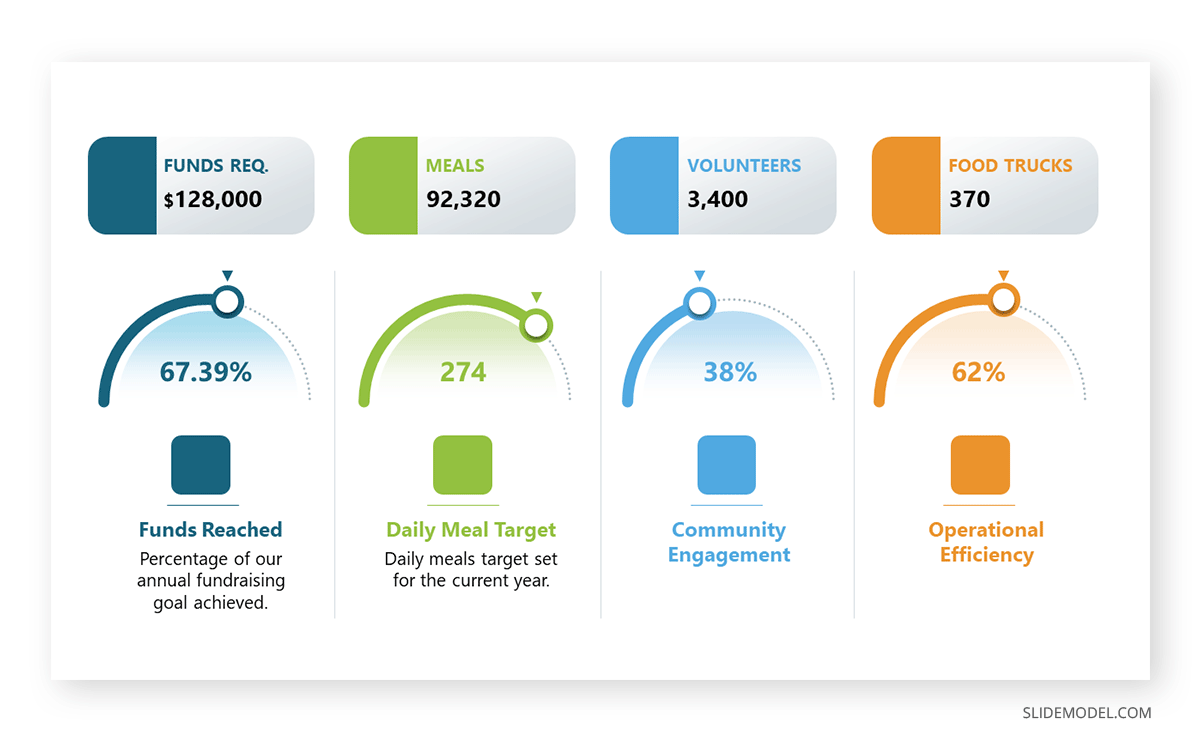
To articulate the explanation of the need plus solution, the storytelling approach is a must. Presenters can use infographic templates to discuss the data that backs up their research on why this cause affects the lives of many and how measurable the impact of taking action is.
Don’t overemphasize the problem. Psychology tells us that donors feel compelled to help causes where they can save the most significant portion of people rather than contribute to reaching 300 in 1000 people. This is known as the drop-in-the-bucket effect. Additionally, instead of using vague statistics, give a name to the target group you are helping. This is done by creating a target persona, the main victim in the situation, and how collective efforts can modify its life. This approach is known as the identifiable victim effect.
Step 6 – Explain the Collaboration Methods & Acknowledgements
A step often neglected in non-profit fundraising presentations is to talk about how to take action to collaborate. Are there tiers? Is this a free-will deposit to the overall funds? Use a fundraising thermometer PowerPoint template to quickly represent how much money is required to meet this fundraising project’s goals.
Use graphics to explain how individuals, companies, and organizations can contribute to this cause. Then, proceed to talk about how to acknowledge their efforts, if there will be a media statement thanking large-scale contributors, if there’s an event in which they can participate, etc. Again, social proof is a driving force, so philanthropists can either be motivated by other people in their social circles knowing they contributed to a new cause – which can bring more funds from unknown sources – or they might prefer anonymity.
Step 7 – Testimonials & Conclusion
Testimonials help to validate your authority and your moral values. If you and your team have campaigned for previous fundraising causes, bring the beneficiaries of these causes to the table. Let them talk about how your actions helped them reach better opportunities in life. This can be done using quotes, a testimonial slide, or a 2-3 minute video presentation.
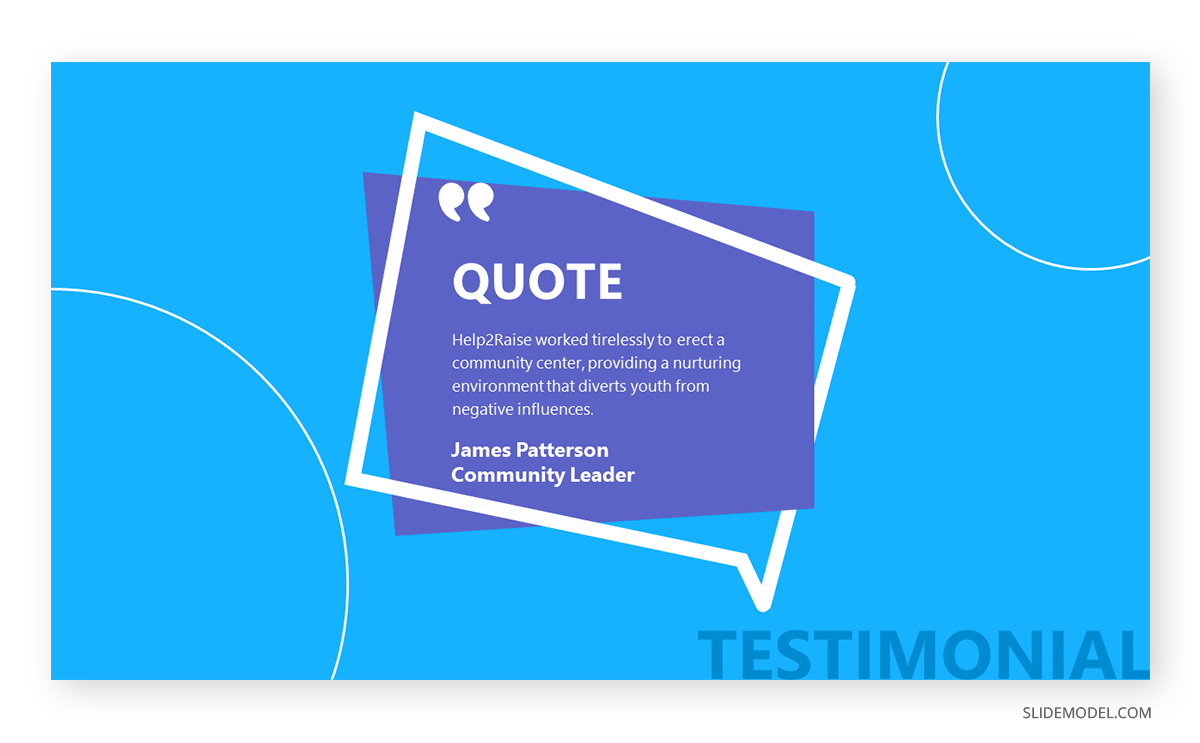
Conclude your presentation by thanking the audience for their time, how they can get in contact with either you or your team, and disclosing dates of planned events for this fundraising cause.
How to Start a Fundraising Presentation for Startups
The take on startup fundraising presentations focuses on making a highly marketable campaign that creates a psychological need to acquire a product, perhaps even stronger, as we talk about a non-tangible element that will be created with the funds gathered. Still, in our experience, this should not be as evident as you selling a product, but rather from a positive mindset, as research shows, on how the product addresses a non-attended need (a typical JTBD approach) and how it will improve lives.
Step 1 – Presenting the Need
Determining the fundraising goals works equally for startups and non-profits. Therefore, we move on to how to present needs for startup fundraising presentations. Follow an approach that considers questions as triggers for action:
- Why is this a problem?
- How does it affect lives?
- Is it being addressed? If so, is it done effectively or cost-worthy?
- How can your team present a better solution?
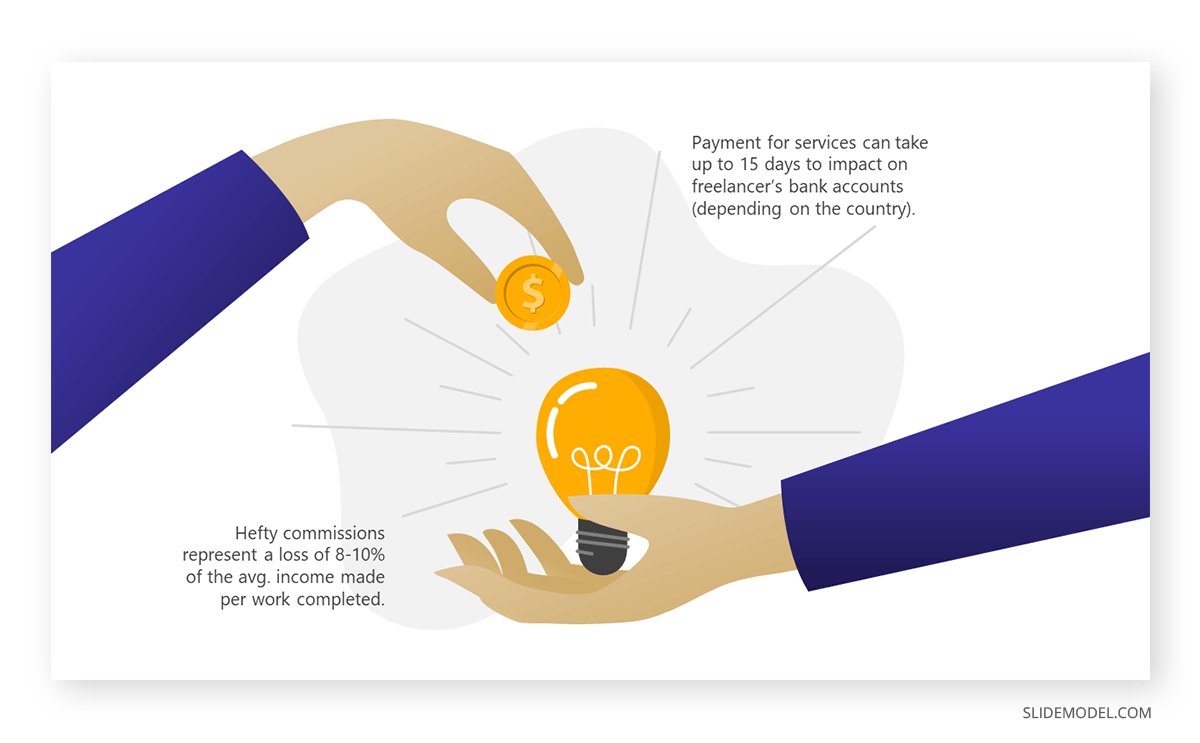
Presenters can leverage the same techniques implemented when pitching to investors, but as long as it remains relatable, in the format of a two-way conversation. Encourage your audience to ask questions and evacuate any potential doubt about why this need is relevant to their lives.
Step 2 – Present the Solution
Now that we have stated there’s a problem with a potentially unmet solution, it is time to disclose what your team’s approach to this problem is. Be creative. Work with product demos, high-fidelity images, videos, and mockups. Anything that can give the audience a clear picture of what your value proposition is and how it answers the problem.
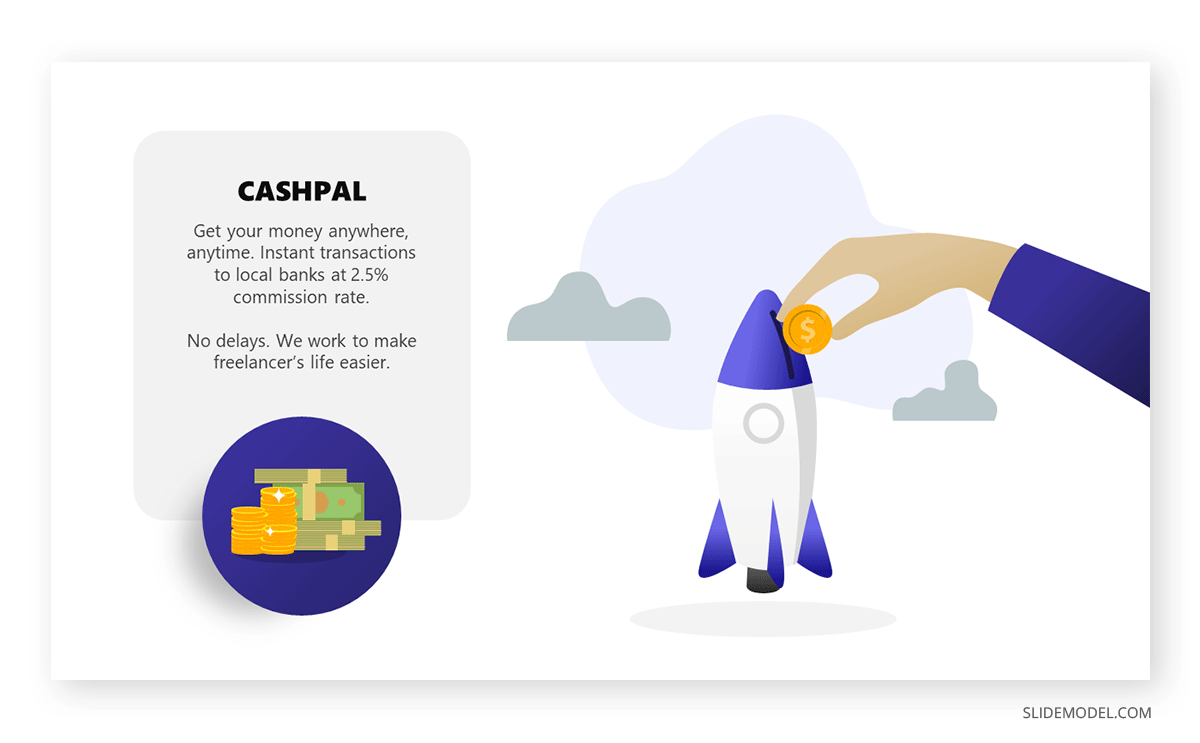
Bring in a slide that offers a comparison of the features that your solution offers to a prospective customer, and how it compares to the current situation.
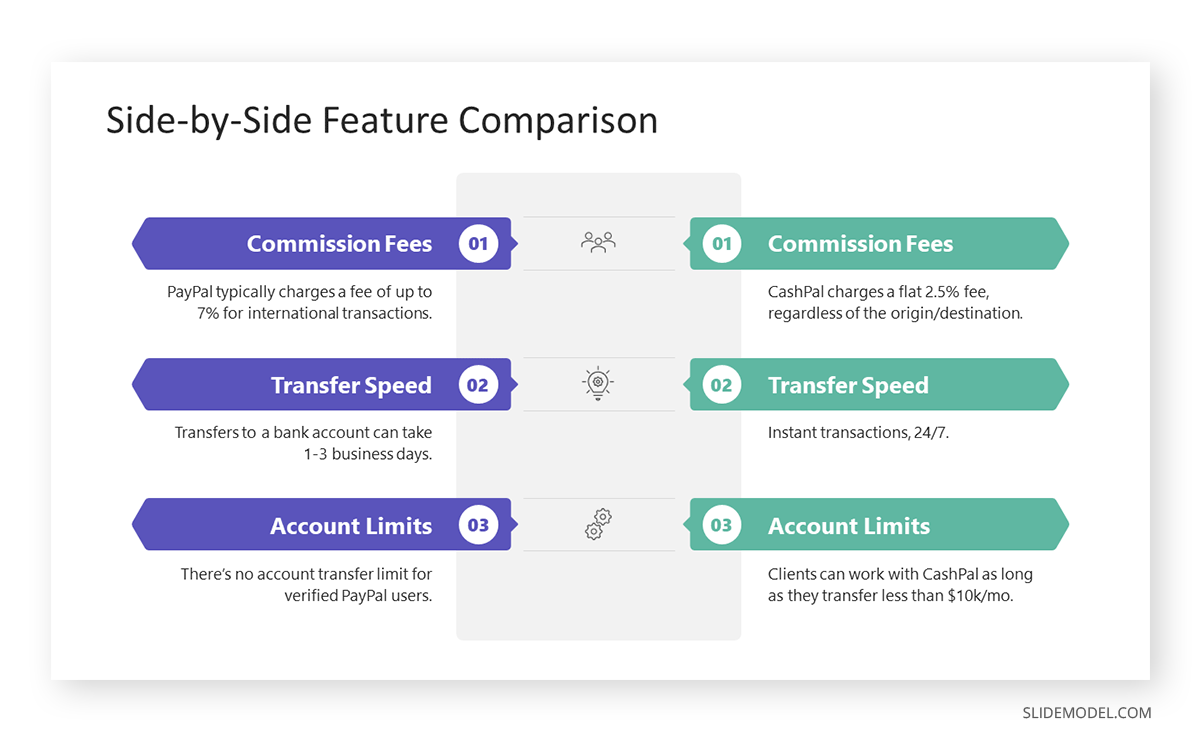
Step 3 – Introduce Your Team
At this stage, you need to introduce each one of the team members involved in your startup fundraising project, their role in the product/service development, and their expertise in the field. This is extremely important as some niches have fierce competition to reach investors. Highlight any potential advantage your team has, past projects and their success rate on them.
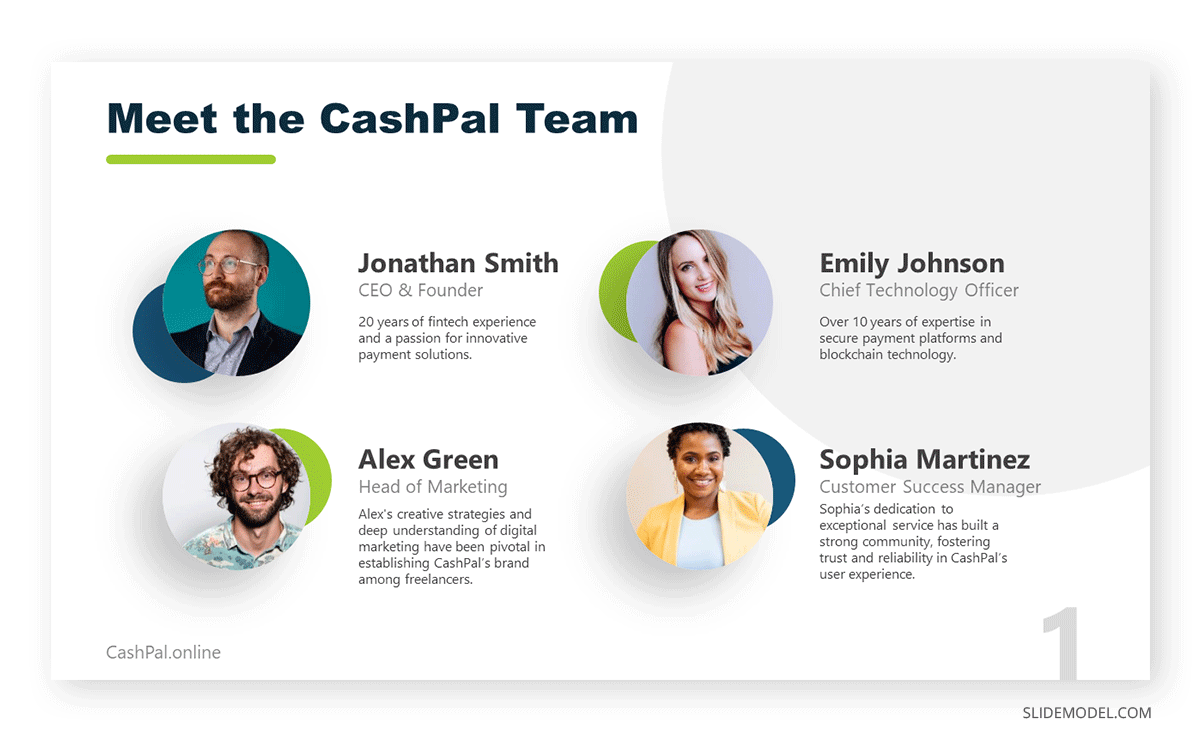
If part of your fundraising is destined to pay outsourced professionals, mention them and explain their role in the project, as it helps to build trust with the investors.
Step 4 – Disclose the Investing Tiers & Acknowledgements
Some angel investors appreciate the advertising of their role in startups, as this is their social proof of success cases and why they are valuable investors for any project. Still, it is important to acknowledge all contributors alike, showcasing their role in your project’s funding in any of these ways:
- Social media endorsement
- Website mention
- Interviews or other media material
How can you define which investors will have more prominence than others? Establish investing tiers for your project. You can define 3 major categories by the sum contributed to your project. Another method is to classify investors for how they contributed through different channels:
- Major donations
- Monthly giving
- Online Investing (i.e.: platforms like GoFundMe, Kickstarter, or Indiegogo)
- Corporate Sponsorship
- Subscriptions
- Lapsed donors (applicable to long-term projects)
- Influencers
Step 5 – Testimonials & Thank You Slide
Much like the case of non-profits, you need to deliver proof of your compromise and moral values, so investors see how your work philosophy and ethics align with their values. This can be managed by endorsements from previous employers. If your crowdfunding project already reached the stage in which the product is completed as a prototype, you can add a reel in which testers give their opinion about its quality and performance.
Don’t forget to tailor the presentation to your meeting – this implies customizing the thank you slide to acknowledge the time granted by the potential investors you are interacting with, and any other relevant data to their niche, as well as how to get in touch.
Infographics and Visualization Ideas as Alternatives to the Fundraising Thermometer
This section will present complementary templates that can pose an alternative to the fundraising thermometer template. Remember that the selection of graphical assets depends both on the project requirements and your taste & preferences.
Fundraising Gauges
Like a car’s fuel gauge, fundraising gauges provide a quick summary of your fundraising progress. As you approach your goal, the dial moves closer to the “full” mark, making it a dynamic and engaging way to display progress.
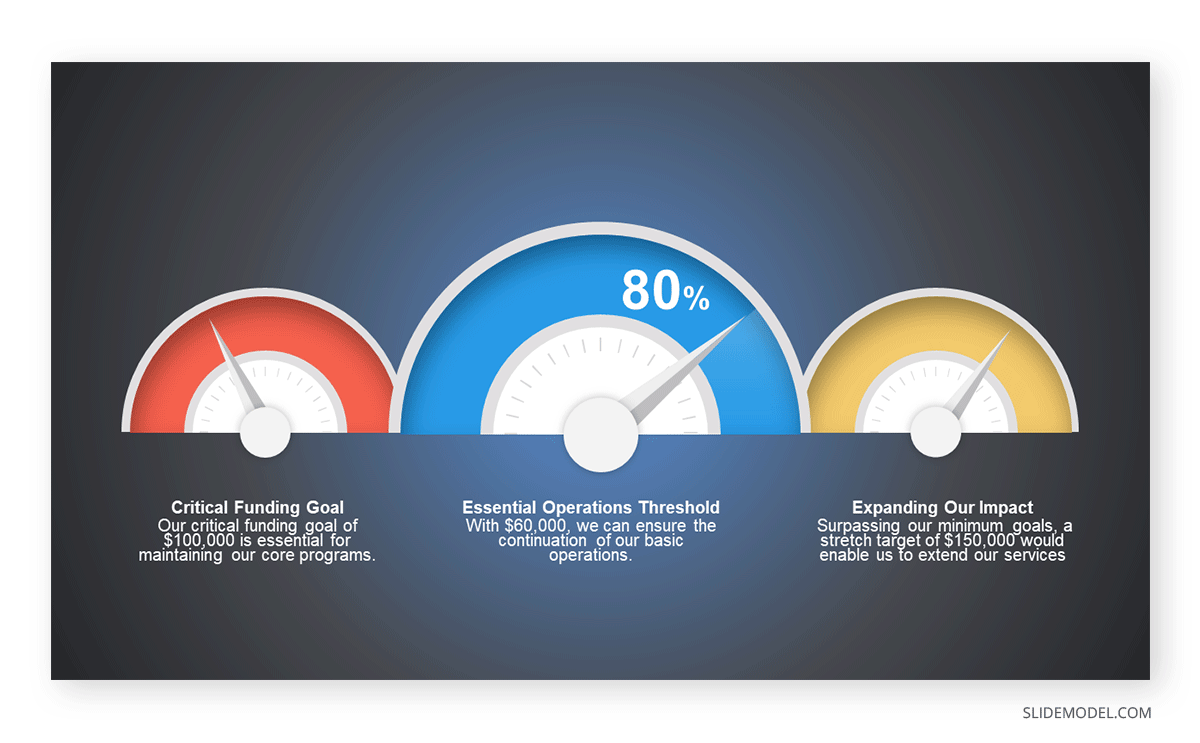
Donation Boxes
Another method to track fundraising progress is the use of donation boxes. Each box represents a certain amount of funds that are gradually filled or colored as donations come in. This method can easily depict smaller donation increments, making the visual progress appear faster and more frequent.
Fundraising Progress Bars
Much like a loading bar on a computer, progress bars offer a simple, linear representation of your progress. As funds are raised, the progress bar fills from left to right. This method is advantageous in digital presentations or websites, as it’s a universally recognized visual cue for progress.
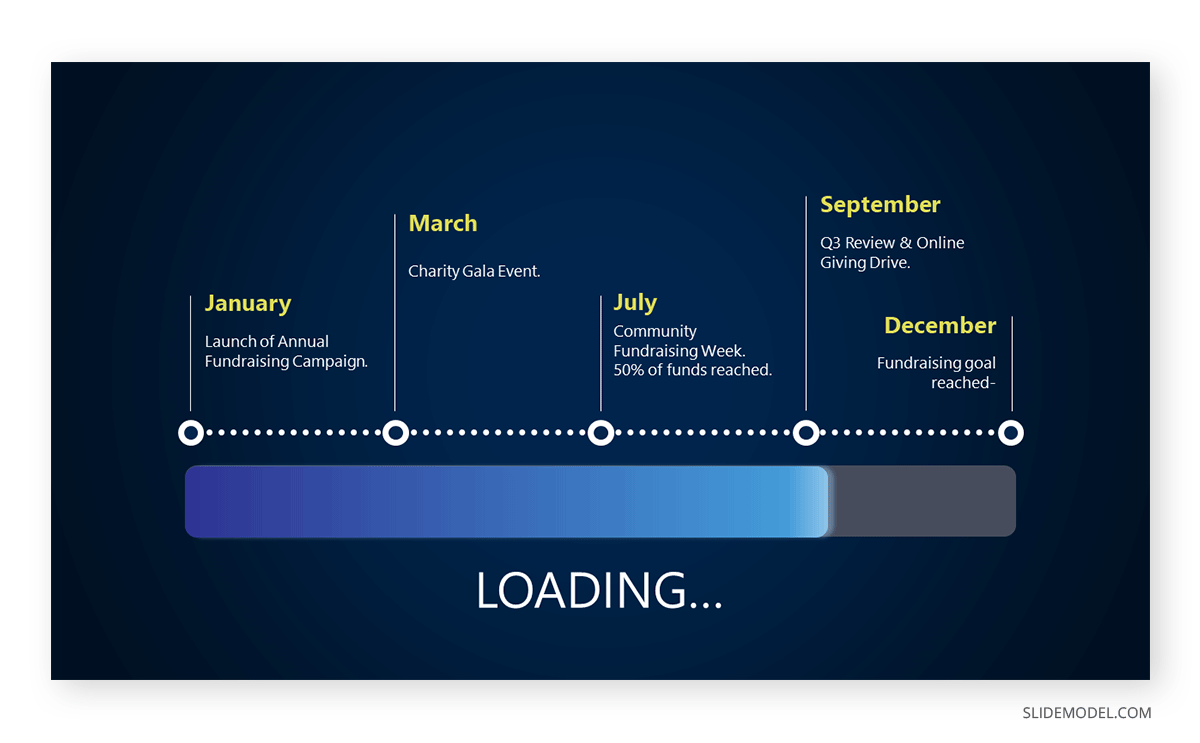
Fundraising Pie Charts
Pie charts can represent the total goal as a whole pie and the funds raised as a slice. This is an alternative when specific categories or projects are within your fundraising effort. Each slice can represent a different category, providing an overview of where the funds are going and how much has been raised overall. As a result, your contributors get full transparency on funds management.
Goal Tracking Calendar
A more creative way to track and display your fundraising progress is by using a calendar. Each day can represent a particular fundraising milestone. As each day passes and the milestones are reached, the corresponding day on the calendar gets marked off or filled in. This is a great way to show daily progress and maintain momentum in your fundraising initiative.
Final Words
Crafting and delivering fundraising presentations is a creative task. Our expertise helps us conclude that more than half of the success rate relies on honing presentation skills. Knowing how to connect with the audience, which body language practices can reflect your passion for the fundraising cause, and how to communicate ideas are must-haves in your arsenal.
